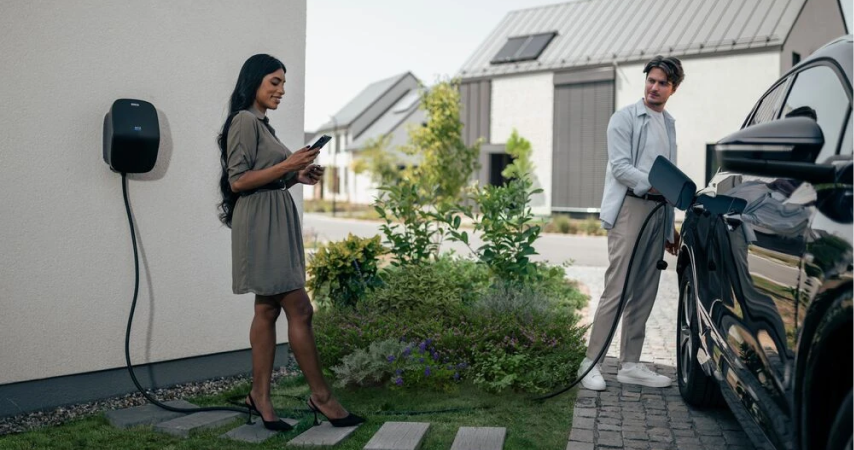


Face to growing environmental concerns, energy transition has become an undeniable priority for corporate fleets. Evolving regulations continuously impose stricter standards on CO2 emissions, and actively encourage the adoption of electric vehicles. Whilst citizens mobilize, your employees also hold high expectations. Thanks to Arval, access to electric mobility is made easier for you.
Contribute to the fight against climate change and air pollution by leading your energy transition and raising awareness among your employees about sustainable mobility and the choice of electric vehicles.
Benefit from tax advantages, reduced electric charging costs, advantageous parking fees, and minimal maintenance.
Offer your drivers a 100% enjoyable and silent driving experience, with instant power from the start and no gearbox.
Capitalize on a wide range of multi-brand and multi-model vehicles, increasing autonomy, expanding public charging stations, shorter charging times, and new synergies with housing.
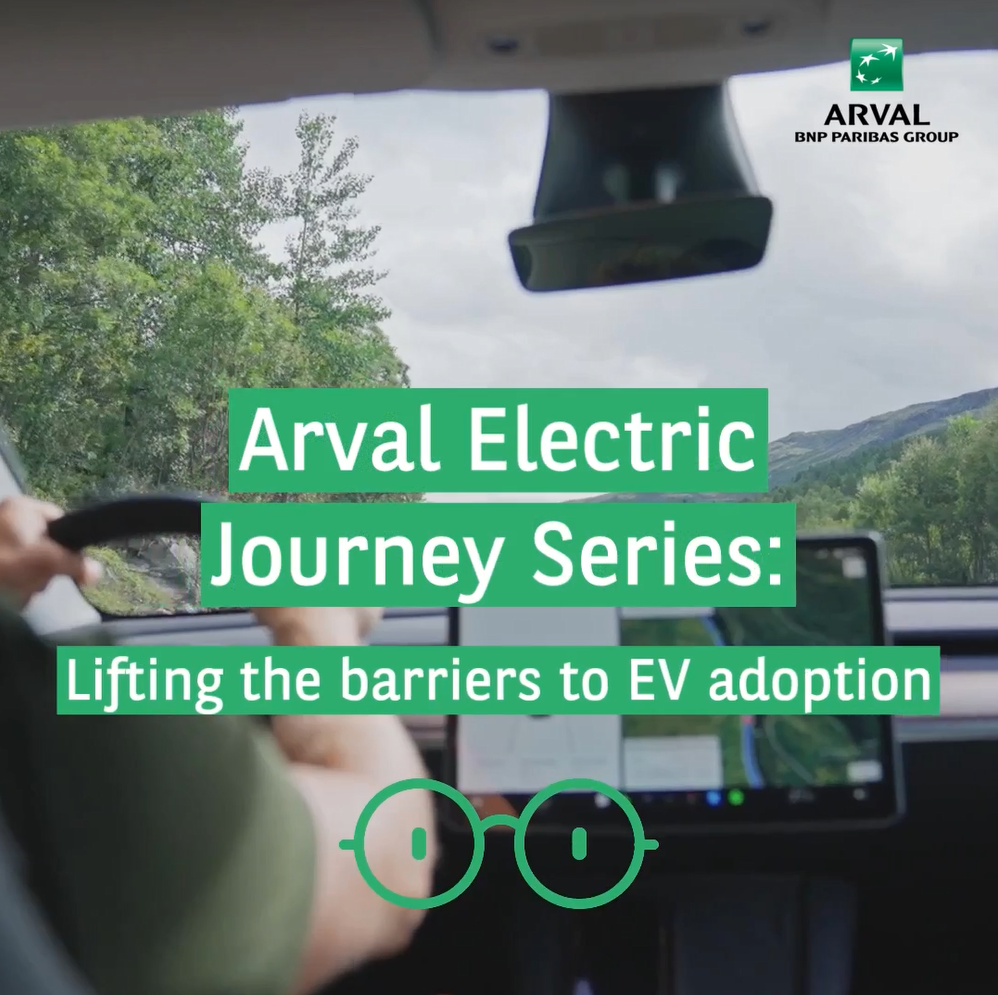
(Video)

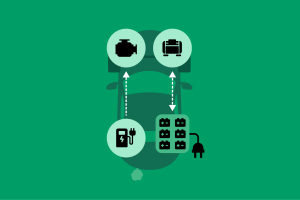
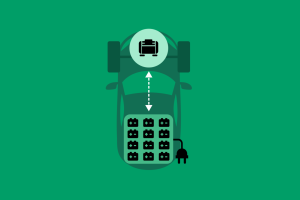
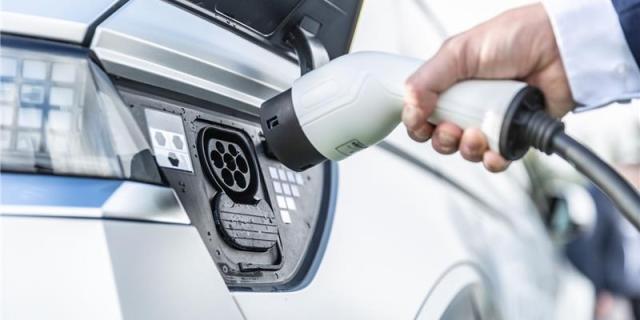



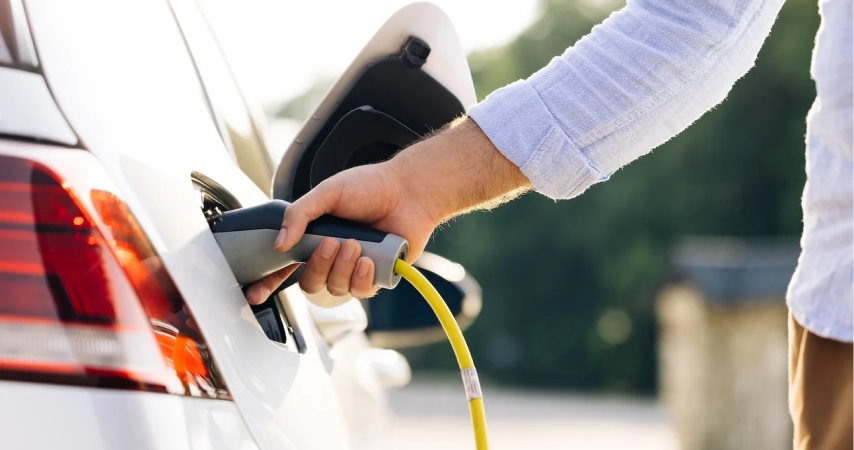
A turnkey solution to support your employees’ transition to electric vehicles by installing a charging point directly at their homes or at your company premises.
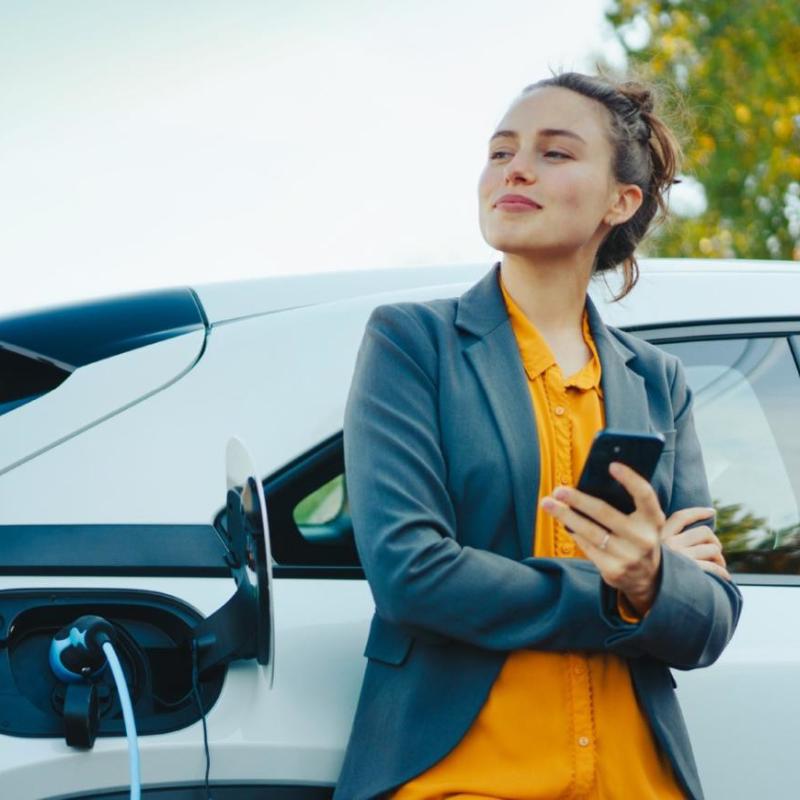


Great for work
Good solution
Driving an electric vehicle offers significant environmental benefits, making it an excellent choice for companies aiming to reduce their carbon footprint.
One of the most immediate benefits is the reduction in greenhouse gas emissions. Unlike traditional combustion vehicles, driving a BEV produces zero CO2 emissions, which helps combat climate change by reducing overall carbon emissions.
They also don't release nitrogen oxides (NOx), and very few particulate matter into the atmosphere, which results in cleaner air, especially in urban areas.
Another key environmental advantage of EVs is the reduction of noise pollution. Electric vehicles operate much more quietly than their combustion counterparts, especially at lower speeds. This quieter operation contributes to a more peaceful urban environment, reducing stress for residents and improving the overall quality of life in cities.
Yes, transitioning from a combustion vehicle to an electric vehicle is generally straightforward and often comes with enjoyable advantages.
One of the first things drivers notice is the instant acceleration. EVs deliver power immediately, allowing for quicker and smoother takeoff from a standstill, which can make city driving and merging into highways more responsive and enjoyable.
Another key difference is the regenerative braking system, which uses the electric motor to slow the vehicle down when you lift your foot off the accelerator. This feature not only recaptures energy and extends the vehicle's range but also means you can often drive using just one pedal. The experience of "one-pedal driving" simplifies the process, reducing the need to use the brake pedal frequently and providing a more relaxed and controlled driving experience.
Furthermore, EVs eliminate the need for a traditional gearbox, as they typically have a single-speed transmission. This means no more shifting gears, whether manually or automatically, leading to a smoother, more seamless driving experience.
One of the adjustments when switching to an EV is the need to plan for charging, especially on longer trips. Unlike refueling a combustion vehicle which takes only a few minutes, charging an EV can require more time depending on the charger type and battery size. But with good practices, this can become just a minor change in routine. For example, using fast chargers available along major highways can recharge an EV to a significant level in about 30 minutes, allowing you to plan charging stops around meal or rest breaks. Additionally, starting each day with a full charge by charging overnight at home or at work reduces the need for frequent stops during daily commutes.
The choice between a hybrid and a fully electric vehicle depends on your daily driving habits and what you prioritize in a vehicle.
Hybrids combine a combustion engine with an electric motor, providing extended range for longer trips while lowering fuel consumption. This makes them a flexible choice, especially if your routine often includes long-distance travel.
However, hybrids require a genuine commitment from the driver to maximize their benefits. If the electric motor isn’t regularly charged and the car relies mainly on the combustion engine, it can lead to higher fuel consumption due to the added weight of the battery and electric components. In such cases, the vehicle might end up consuming more fuel than a traditional car.
In contrast, a 100% electric vehicle runs entirely on electricity, making it the more eco-friendly option with zero emissions during use.
Beyond the environmental benefits, electric vehicles offer lower running costs thanks to cheaper electricity and fewer parts prone to wear and tear. This translates to a reduced risk of breakdowns, as there are no complex systems like exhausts, gearboxes, or clutches that require frequent attention. While regular maintenance like tire rotations and brake servicing is still necessary, the overall potential for mechanical failure is significantly lower.
An electric vehicle can suit various driving needs if you select a model with an appropriate battery range, maintain a smooth driving style, and plan your journeys. Whether charging at home, at the office or using public charging infrastructure, being mindful of charging options can make integrating an electric vehicle into your routine straightforward and efficient.
As a general rule, charging your electric vehicle can take from 20 minutes at a fast charger to several hours at a slow charge point.
The time it takes to charge an EV actually depends on several key factors:
To get a precise idea of how long it will take to charge an EV model, you can refer to the technical sheet provided by the manufacturer.
Electric vehicles offer flexible charging options that can easily integrate into an enterprise's daily operations to enhance convenience for their employees.
Home charging is a popular choice for employees, as it allows them to start each day with a fully charged vehicle without needing time to charge during the day. Using a secured reinforced household outlet or a more powerful dedicated charging unit, they can completely recharge their EVs overnight. This is also a cost-effective option since home electricity rates are lower than public charging fees, all the more that your employees can schedule charging to take advantage of off-peak electricity rates.
Office charging takes this a step further. By providing charging stations at the workplace, companies encourage employees to transition to electric vehicles, knowing they can recharge while they work. It also demonstrates the company’s commitment to sustainable practices, making it an attractive perk for current and prospective employees.
Public charging networks further enhance the electric driving experience by offering a vast and growing network of charging points in city centers, shopping malls and along highways, including fast chargers that can provide a significant boost in as little as 30 minutes. This option is ideal for employees who need to travel long distances for work or vacation, as it allows for quick and convenient charging on the go, giving them the flexibility to travel wherever they need without range anxiety.
Arval supports you with each of these options: Home Charging, Office Charging, Public Charging.
Yes, electric vehicles are increasingly reliable for long-distance travel, thanks to advancements in battery technology and the expansion of charging infrastructure.
Modern EVs now offer significantly improved ranges, with many models capable of traveling 300 to 500 kilometers on a single charge. This range is more than sufficient for most long-distance journeys.
In parallel, the growing network of fast-charging stations makes it easier than ever to recharge along the way. Fast chargers, commonly found along highways, can recharge an EV’s battery to 80% in only 30 minutes. Many charging stations are also strategically located at rest areas, restaurants, and shopping centers, making it easy to plan stops that fit naturally into the journey.
Additionally, many mobile app such as those related to the Arval Charging Card propose a built-in route planning that identifies charging points along your route, ensuring you can travel without range anxiety.
Choosing an electric vehicle based on its range should be based on a clear understanding of your needs.
Assess your daily needs. If you mainly make short journeys such as commuting journeys of less than 50 kilometers, even vehicles with a modest range (200-300 km) will be more than enough. On the other hand, if you regularly make long journeys, opt for a model with a higher range, between 400 and 500 km, or even more.
Consider exceptional journeys. If you take occasional longer journeys, make sure that the chosen vehicle offers enough range to cover a large portion of these journeys without frequent charging. Also think about the availability of charging stations on your usual routes.
Consider driving conditions. Actual range may vary depending on several factors: city or highway driving, weather conditions, and use of air conditioning or heating. If you often drive in winter or on the highway, it may be a good idea to choose a vehicle with a higher range to compensate for the increased energy consumption.
Anticipate changes in your needs. If you are planning changes in your lifestyle (moving, increased daily commutes), choose a vehicle with a range that will offer you a safety margin for these new requirements.
Choosing an electric vehicle based on charging speed should be based on a clear understanding of your personal needs, driving habits, and available charging infrastructure, to fit your lifestyle.
Understand the types of charging. There are three main types of charging: slow charging (home, 3,5 to 7 kW), fast charging (public stations, 50 kW), and ultra-fast charging (highway stations, 150 kW and above). The speed of charging depends on the type of charging station but also on the vehicle's capabilities.
Choose according to your charging habits. If you can charge primarily at home or at work, the charging speed may be less critical. You'll be able to charge the vehicle overnight or while you're working, making a quick charge less necessary.
Prioritize fast charging for long journeys. If you frequently make long journeys and need to make stops to charge along the way, opt for a vehicle that supports fast or ultra-fast charging. For example, a vehicle that can withstand charging at 150 kW or more will allow you to recover up to 80% of the charge in 20 to 30 minutes.
Check compatibility with local infrastructure. Make sure that the vehicle you are considering is compatible with the charging infrastructure available in your travel areas. For example, if you have access to CCS (Combined Charging System) fast charging stations, choose a vehicle equipped with this standard.
Compare charging times. Vehicle specifications often indicate the time it takes to go from 0 to 80% charge on different types of charging stations. Compare this data between models to choose the one that best fits your lifestyle. A vehicle with a shorter charging time will be particularly advantageous if you are often in a hurry or on the move.
Consider energy efficiency. A vehicle with better energy efficiency (less kWh/100 km) can charge faster for the same amount of energy, which can compensate for a more modest battery capacity.
The monthly rental cost of a BEV can sometimes be higher than that of a traditional combustion vehicle. This is primarily due to the higher initial acquisition cost of electric vehicles, largely driven by the advanced technology and battery systems they use. This gap is steadily closing, thanks to on the one hand regulations and incentives aimed at promoting the adoption of electric vehicles and on the other hand by the progress made by the manufacturers.
However, it's crucial to consider the total cost of ownership rather than just the monthly rental fee as several factors can make BEVs more financially attractive.
Charging a BEV is generally much cheaper than refueling a petrol or diesel vehicle, especially if the vehicle is charged at home or at the office. Electricity rates are usually lower than fuel prices, and businesses can further benefit from overnight or off-peak electricity rates, which can significantly reduce the cost per kilometer of driving.
Even if we still have little hindsight, BEVs have fewer moving parts (400 versus 1000 for an ICE vehicle on average), resulting in probably lower maintenance costs. Components such as the electric motor and regenerative braking systems experience less wear and tear, reducing the frequency and cost of servicing.
In addition, in many cities, electric vehicles benefit from reduced or even free parking, as well as exemptions from congestion charges and tolls. These advantages can translate into significant savings, especially for businesses operating in urban areas.
Arval supports you in the cost analysis to offer you the best alternatives for your needs.
The most important aspect of EV maintenance is the battery. While modern EV batteries are designed to last for many years with minimal upkeep, regular inspections of the battery’s condition, cooling system and electrical connections are recommended. Additionally, software updates may be necessary to ensure optimal energy management.
As with traditional internal combustion vehicles, some components require periodic checks and replacements depending on wear:
While it’s essential to follow the manufacturer’s recommended maintenance schedule, electric vehicles generally require less frequent servicing compared to combustion engine vehicles. This is largely because EVs contain fewer moving parts (about 400 in an EV versus around 1,000 in traditional vehicles). Several maintenance tasks typically required for combustion vehicles are not necessary in electric vehicles, helping to minimize the risk of breakdowns:
Moreover, the regenerative braking system in EVs recovers energy during deceleration, significantly reducing brake pad wear and, therefore, the need for frequent replacements.
Yes. In our 360° support for fleet electrification, Arval proposes different solutions to support your employees’ in charging their electric vehicle: on the road, but also at home or at the office.
For charging at home, we propose the leasing of a charging station over the same period as the EV. See more on Arval Charge Point Services.
At the end of the contract, you have the same alternatives than that of any long term-rental vehicles at Arval.
You can all simply renew your EV with another vehicle, with the identical process as for any renewal of vehicle.
In addition, you have the possibility to buy the EV for you, a close family member or a friend with an attractive price and with the security of well-performed maintenance.
Arval STAR, which stands for Strategic Transformation through Actionable Recommendations, is the culmination of 35 years of experience, bringing together our expertise, tools and processes delivered by our consulting teams into a universal 5-step methodology.
Designed to be both simple and powerful, Arval STAR’s methodology allows our consulting experts to provide you with a clear roadmap to success. With the five steps of Arval STAR, our experts ensure that every energy transition project is strategically aligned, actionable, and results driven.
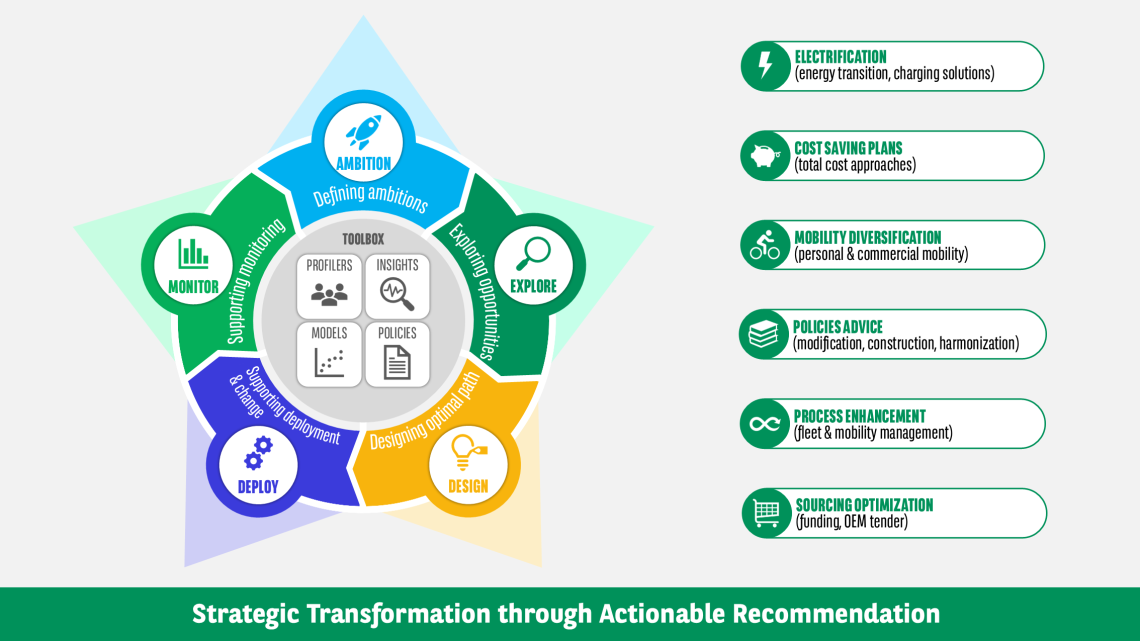
As the industry moves towards more sustainable solutions, our experts provide practical strategies for transitioning fleets to electric and hybrid vehicles. This includes planning for charging infrastructure, managing energy consumption, and identifying government incentives for sustainable energy solutions.
We offer a wide range of passenger and commercial vehicles from various brands and models. Thanks to our strong relationships with manufacturers, we have access to offers on a range of electrified vehicles. We assist you in choosing the best EV equivalents for your vehicles.
Galactic republic have taken all the people power
Laughing is an important factor for the well being